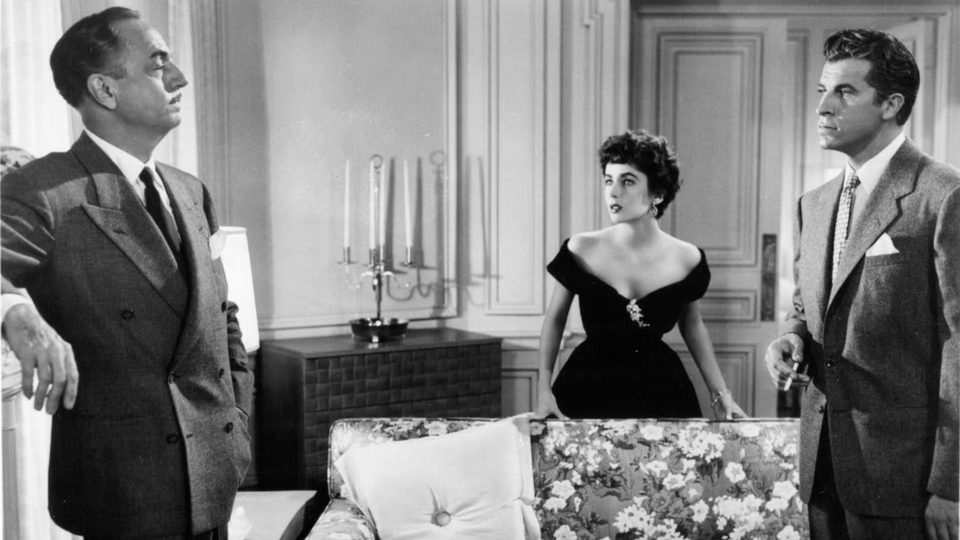The Girl Who Had Everything

Elizabeth Taylor plays the headstrong daughter of a defense attorney played by William Powell. She falls for one of his clients: a suave but ruthless racketeer played by Fernando Lamas. Predictable drama ensues.
The charismatic performances compensate for the familiar plotting. Supporting player Powell, in his last MGM feature, holds his own in scenes with top-billed Taylor.
The film opens with the pair in their well-furnished living room. She calls him Steve instead of Dad, indicative of their semi-estranged relationship. A small exposition dump informs us Powell’s wife died when Taylor was young and that, because of work, he’s been an absent father, missing Taylor’s graduation, a major surgery, and her playing the lead in her senior play. As a result, she ran wild and got into a jam, forcing Powell to “step in and do something about the kind of girl she was getting to be.”
Enter Lamas as an arrogant New York mobster on trial before the US Senate. His thick accent helps the performance, furthering his sense of “otherness” while enhancing his effortless confidence the same way Arnold Schwarzenegger’s would decades later.
Taylor sees him on TV and feels an instant attraction. When Powell takes the case, she travels to DC. Meeting Lamas, the attraction proves mutual.
Lamas follows her to her and Powell’s home in Lexington, Kentucky. He leases a house and buys a race horse. The two begin a secret affair.
Gig Young plays Taylor’s ostensible beau and all-around nice guy. She returns home late one night to find him waiting. She kisses him. In a surprising bit of sharp dialog, he asks, “What are you doing, comparing?”
Taylor stammers out faux outrage, but Young presses on, “Are you sure you’re not reverting to the comic strips? Getting your kicks out of a hoodlum?”
The script never reaches these barbed heights again, but the trio of Powell, Taylor, and Lamas entertain. Taylor, in particular, shines. In a part ripe for over-emoting, she delivers an understated performance, relying on her inherit charisma to win over the audience even as her character’s actions prove alienating. Powell’s objection isn’t born of prejudice or elitism—we know Lamas is a bad guy. Taylor’s strength lies in keeping us on her side, regardless.
Things reach a tipping point when a drunken Powell visits Lamas late one night to find him in his bed robe, and her upstairs. As explicit as a 1952 film would allow. Taylor announces her intent to marry Lamas, Powell tries to warn her. She won’t hear of it.
Taylor and Powell travel to New York to marry. Before the ceremony, Lamas has to attend to some business with his old boys. Their sources report Powell plans to talk to Senate investigators. Lamas vows to handle it. The boys aren’t so sure.
Lamas returns to his and Taylor’s hotel suite to find Powell waiting. He warns Powell not to talk. When that won’t take, he slugs Powell. Seeing this, Taylor announces they’re done. Lamas smacks her, then walks out. The boys are waiting.
The ending satisfies and at only sixty-nine minutes, the story doesn’t overstay its welcome. Given its post-Hays code status, the ending was never in doubt, but the great cast and at-times biting script make for a pleasant enough journey.